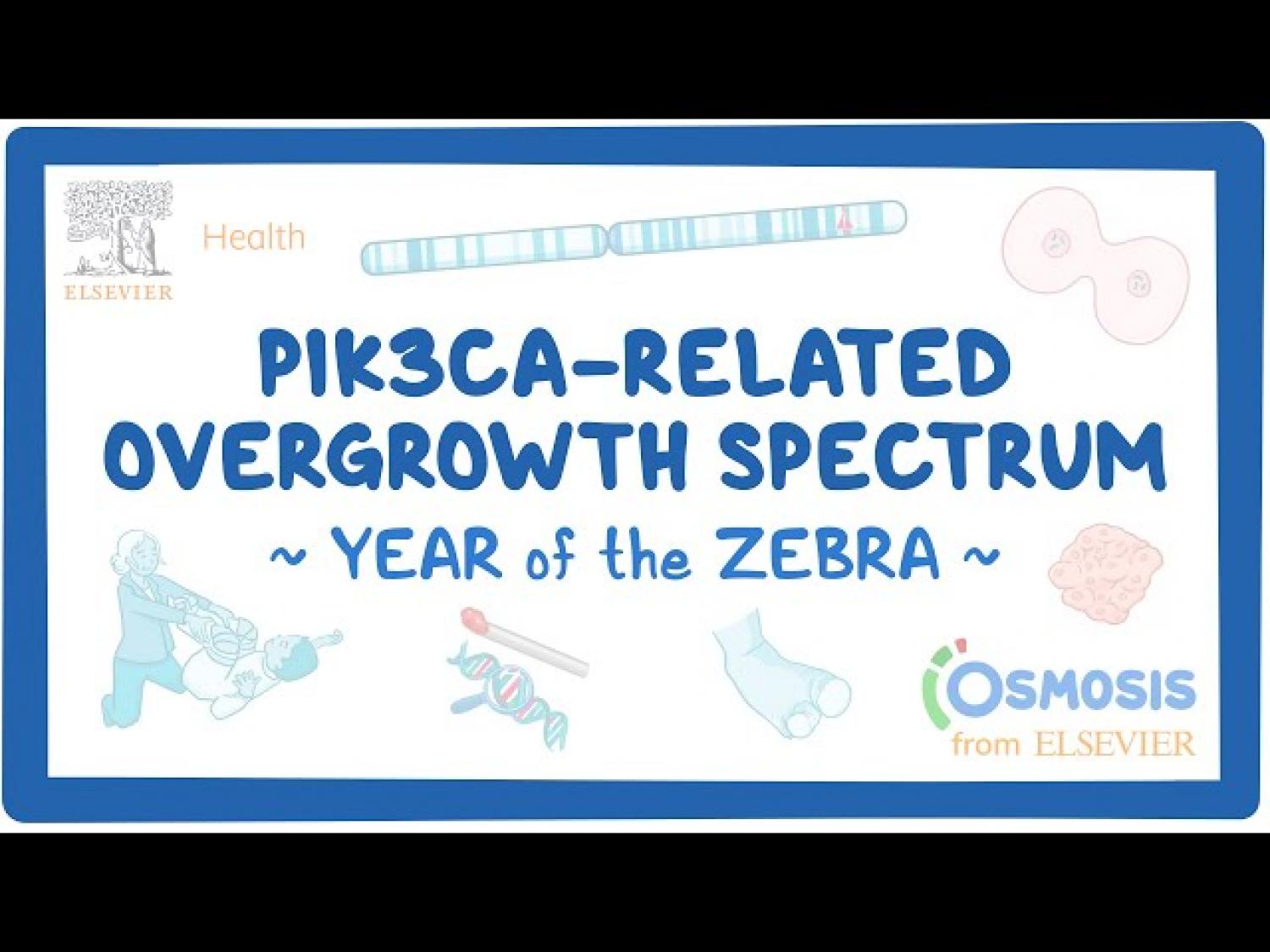
Rare Disease Education: PIK3CA-related Overgrowth Spectrum
Editor: Kelsey LaFayette, DNP, RN, FNP-C
"When you hear hoofbeats, think of horses, not zebras,” is a common saying in medical education that means you should think of common conditions first, instead of rare ones, in making a diagnosis. “Rare” is a relative term though and about 7,000 rare, or "zebra," conditions affect more than 350 million individuals worldwide. Although these conditions collectively affect an enormous number of people, each of these conditions individually is rare enough that it can be difficult to secure the resources to study them and to develop treatments and cures. Likewise, awareness of rare conditions may be low and health care professionals may not be familiar with their signs and symptoms making it more difficult to reach a correct diagnosis and provide effective treatments.
Rare Disease Education: PIK3CA-related Overgrowth Spectrum
To increase knowledge about rare conditions, Osmosis and the National Organization for Rare Diseases (NORD) have collaborated on an initiative to bring education and awareness to the public. We are excited to be a part of this initiative because we believe everyone deserves quality health care, no matter how rare their condition.
Think about your favorite garden. Whether it’s your own backyard or a beautiful botanical garden you visited on vacation, the plants grow in a controlled, balanced manner. Imagine if something disrupted this balance, causing some plants to grow disproportionately compared to the others. In essence, this unregulated growth is the root cause of both the changed garden and this week’s Zebra, PIK3CA-related overgrowth spectrum.
The cause of overgrowth is mutations in the PIK3CA gene that helps regulate cell growth, division, and survival. Just as the garden can overgrow in many different ways, there are many manifestations of the same root cause and therefore many genetic disorders that fall in the PIK3CA-related overgrowth spectrum.
One of the subtype disorders on the spectrum is CLOVES Syndrome which is an acronym for Congenital Lipomatous (fatty) Overgrowth, Vascular malformations, Epidermal nevi and Scoliosis/Skeletal/Spinal anomalies. There are only 150-200 documented cases worldwide. These syndromes are typically diagnosed at birth or in early childhood
Meet Madison
An abnormal prenatal ultrasound was the start of the rare disease journey for baby Madison and her family. She was diagnosed with CLOVES syndrome and looks different from other children her age, but that does not stop this resilient family’s strive to give Madison a full, thriving life. Watch her inspirational story above.
More Information on PIK3CA-related Overgrowth Spectrum:
